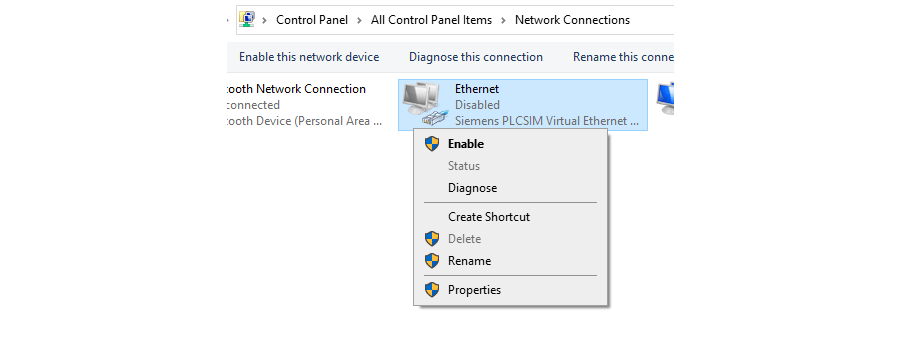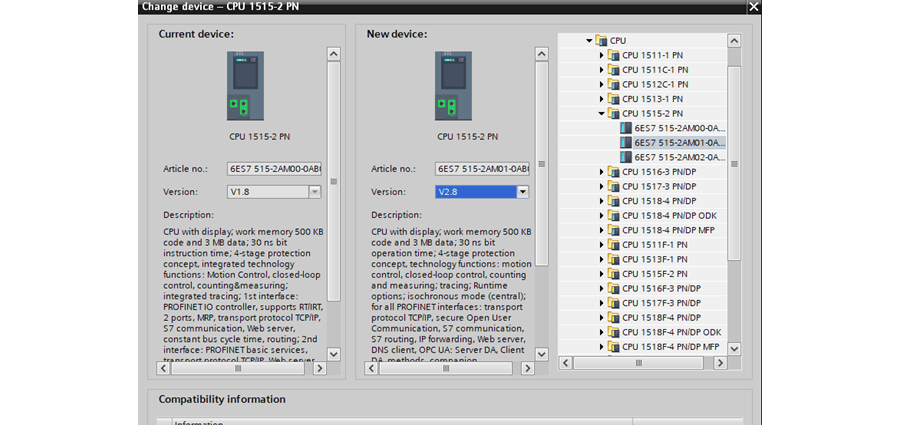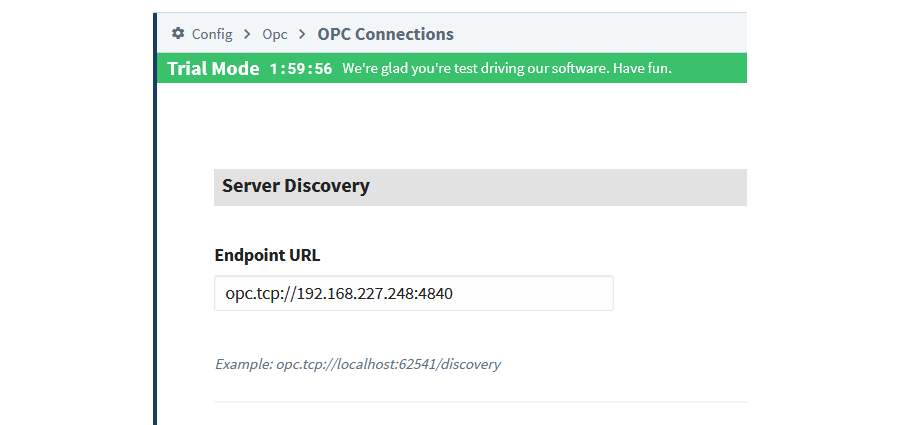The ability to simulate hardware is an invaluable tool to keep in your development kit. It allows you to develop remotely, test changes without interrupting critical systems, and more. This blog serves as an addendum to Nikhil Holay’s informative blog 5 Tips For Getting Started In PLCSIM Advanced.
What if PLCSIM Advanced Doesn’t Work Out of the Box?
Generally, configuration of PLCSIM is straightforward. However, you may run into a few hiccups along the way. In both of the following cases, PLCSIM provides helpful advice to a smooth resolution. For example, you may attempt to configure your adapter and receive the following notification.

If that’s the case, reinstalling the software is a quick way to getting on with your project. You may also come across the following.

This is even easier to handle. Browse to your Network Connections and simply enable the correct virtual adapter.

Configuring an S7-1500 Processor
With those details out of the way, you should be ready to go! But where exactly are you headed? Are you looking to develop code for a Siemens PLC that supports OPC UA? Are you building an Ignition HMI project? Do you want to build each of these out on the same machine?
If you answered an emphatic "Yes!" to the above, PLCSIM Advanced has you covered. Just make sure to select a processor in TIA Portal that has an integrated OPC UA server. For an S7-1500, you’ll need V2.0 or above. The same is true for an ET 200, with the caveat that the ET 200S series controllers don’t support OPC UA. PLCSIM Advanced does not support S7-1200 controllers at the time of publishing.
If you're adapting an existing solution to fit your development needs, fear not. Changing the version of your virtual controller is even easier than swapping real hardware. In the Devices & Network view, right click on the PLC and select “Change Device.” On the left, Portal will give you a description of the current device, and on the right you can select a new device and its version from the dropdown menu.

How Do I Configure the OPC UA Server Settings?
After creating your device, you’ll want to configure the OPC UA server options, again in TIA Portal. Head to the device Properties and click on OPC UA. You’ll want to Activate the server and proceed, leaving the remaining settings at their defaults.

You’ll also need to select the appropriate license under the Runtime licenses menu.

After everything is configured in your project, you’re good to go! Download your project to the PLCSIM Advanced controller you already created as if it were real hardware–see Tip One, Step 3 in Nikhil’s blog.
Configuring PLCSIM Advanced for Development Across Machines
If you’re planning do development in TIA Portal and Ignition on the same local machine (or VM), use the option for TCP/IP communication with the <Local> network adapter selected. If your Ignition server resides on a different machine or VM, you’ll want to select the network adapter of the machine running PLCSIM.
How does all of this work on the Ignition side? Thankfully, it’s as straightforward as working with real hardware. On your Ignition server, add a new OPC UA Connection, point the Endpoint URL to your virtual PLC, and proceed as usual.

If the two pieces of software are on the same machine or VM, you should be ready to go. If your Ignition server and PLCSIM are on separate VMs and Ignition indicates there is an issue, you’ll want to make sure the two are both set to share the host’s network (via NAT or another method). Check your VM’s Network Adapter settings to be sure.
Conclusion
PLC emulation is a great development tool, and PLCSIM Advanced makes it easy to develop your Siemens PLC and Ignition projects concurrently.
You can learn more about our Siemens and Ignition expertise, or contact DMC to discuss your next project.